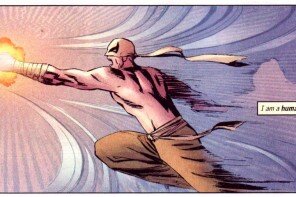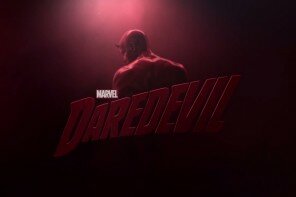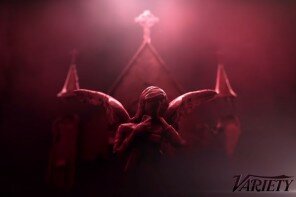He loves classical music and his clothes are immaculate. He’s calm, calculated and methodical – those who come to him for help and business don’t know the darkness lurking inside. Bach’s Goldberg Variations underscore his day, his show’s titles feature seeping redness covering everything… Whether it’s Hannibal or Wilson Fisk, it’s hard to deny a number of similarities between the good Doctor and the Kingpin. Spoilers, obviously, follow for both NBC’s Hannibal and Netflix’s Daredevil.
A BIT OF THE OL’ ULTRA-VIOLENCE

It goes without saying that both Hannibal Lecter and Wilson Fisk have their moments of violence. Both are partial to almost literal bloodbaths – Hannibal’s own blood-soaked murder-fest in Mizumono is literally scored by a piece called “Bloodfest”, whereas Wilson establishes his dominance to a decapitation-by-door that more than slightly resembles a shower wall at the height of its use. Violence, of course, is nothing new to villainy. It is undoubtedly hard to actually think of any villain who doesn’t commit or facilitate some grand act of violence, but Hannibal and Fisk share a whiplash quality to their outbursts that is hard to ignore. Both are calm and considered in their actions, harkening back to the sudden ultra-violence of A Clockwork Orange as much as they are setting the table for their own take on the act. The whiplash between ‘mild-mannered’ and ‘murderous’ is startling – and while effective both employ the same calmness, tension-wracking as it might be, to underscore their aggression.
CULTURE, REFINED
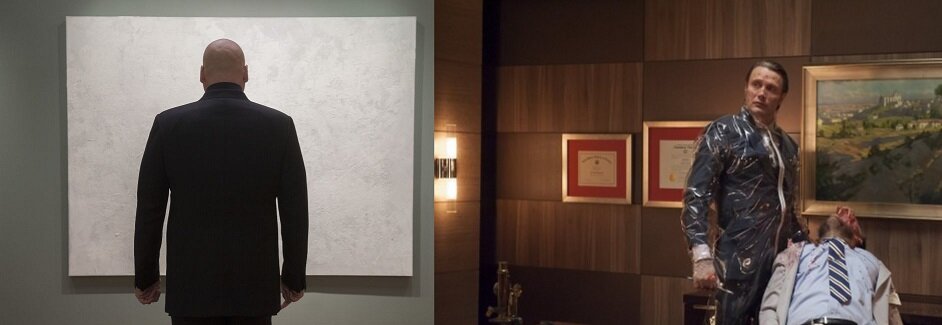
Their calmness is tied to a specific cultural notion – the cultured upper-middle class. Hannibal, a storied psychologist, and Fisk, a wealthy land-baron, both represent a particularly masculine pinnacle. For both of them, there is no further height to assail legally. This manifests in a sense of refinement – they steep themselves in the hallmarks of western culture, simplistic as it may sometimes manifest, and these elements become their calling cards. Both internalize the art they encounter, both embody the calmness of refined society, both are scored by classical western music (Bach’s Goldberg Variations appears in both shows as the first diegetic music underscoring views of their home-life). Hannibal and Daredevil bend over backwards to sell viewers on the austere culture of their respective villains – even if they share an almost suspicious music cue.
THE REPLICATED MAN
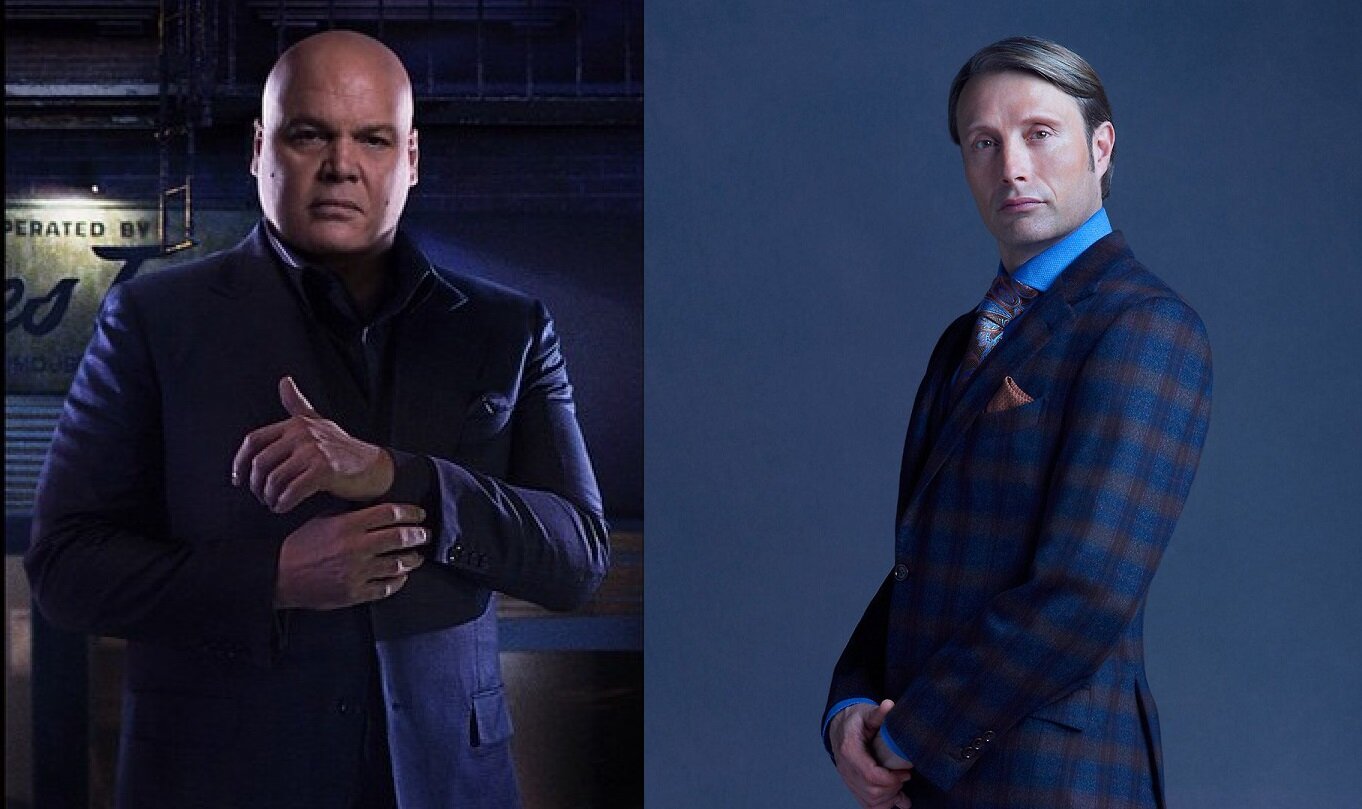
Fisk and Lecter share a visual style outside of their cultural signifiers – both are exemplified by straights lines disturbed. For Fisk, the disturbing is part of his presence, ruffles and wrinkles brought on by imposition rather than deliberately laid out. Hannibal takes the opposing view – straight, unbroken lines offset by patterning and eccentricity. Neither is loose, neither is indelicate – both shows take great pains to show the deliberateness of their construction. This is a deliberate visual signifier – they are measured characters, ripples shown on the surface but never expressed except in the aforementioned violence. Take the above promotional photos for both shows: similar in construction, only differing in pose and background.
THOSE TITLES

But if I had to pick the biggest sign that Hannibal has sparked a trend, it would be the titles. Bursting outwards from Fisk is the atmosphere of Daredevil, best exemplified by the slow and measured titles of thick, red blood pouring out a slick shadow of the city and its inhabitants. Hannibal holds this closer to its chest, showing only the shadowed outlines of its characters, but it’s hard to deny both share the same DNA. Liquid pours, a shape manifests, the tone of the show is put forward on that basis. For Hannibal, that tone is fear (the connecting blood turning monstrous rather than symbolic), whereas Daredevil keeps it metaphorical. Thematic images are caked in blood (arguably the same purpose as the fear-masks of Hannibal), and that blood slow comes together to form the final titles. Both Fisk and Hannibal represent that coming together of tropes, most of them fairly old in their origin, but never quite so starkly combined as between the pair of them. It does seem that Hannibaling is the way to craft a modern villain.


